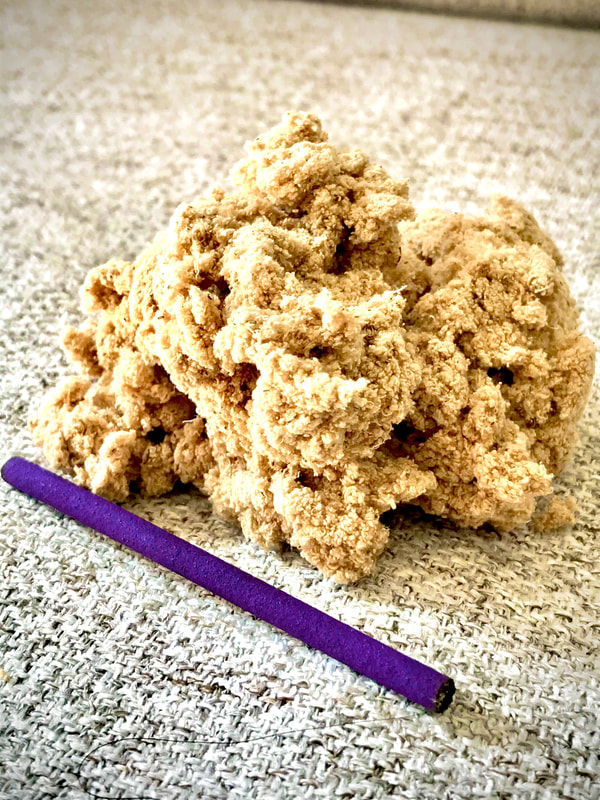|
Moxibustion, which is often abbreviated as moxa (pronounced, mokusa in Japanese), is the stimulation of acupuncture points with warmth. Moxa goes hand in hand with acupuncture, and in fact, it likely predates the use of needles to alleviate sickness in ancient China. The characters for shinkyu (zhenjiu in Chinese) means "acu-moxa therapy," or "acupuncture and moxibustion." We can see right away that the two therapies are of equal importance. In the Japanese language, mokusa means "burning herb," which tells us precisely what this modality consists of -- burning very small pieces of a dried herb on or near the skin at specific places deemed necessary for treatment. You'll notice that within the field of Oriental Medicine, including this blog, the term moxa simultaneously refers to the treatment modality itself and the herb that is used.
Moxa is performed using a variety of mugwort called Yomogi in Japanese, or Aiye in Chinese. Pieces of this herb are lit and allowed to smolder for a short period of time. There are many different ways in which moxa can be applied, but they can all be placed into one of two categories, direct or indirect. Direct moxa means burning very small cones -- about the size of half of a grain of rice -- directly on the skin. Indirect treatment can refer to placing a piece of moxa on the head of an inserted needle and allowing it to burn, or holding a rolled stick of moxa just above the skin. Whichever method is applied, moxa is a very safe and effective tool to use alongside, or sometimes in place of, the use of acupuncture needles. Yomogi is found in temperate climates of Asia, Europe, and North America. It is a perennial plant that belongs to the daisy family. It has a strong fragrance, and is similar in appearance to chrysanthemum. Yomogi grows to be about four or five feet tall, and it has leaves that are deep green in color, with light brown flowers. The fresh leaves are harvested between May and August, and are then left to dry in the sun before being ground and sifted to remove coarse material. This process is repeated until the desired consistency is achieved. Moxa is graded based on the intended use of the final product. Moxa used for direct, rice grain style application requires more processing in order to yield a more refined, higher quality product; while moxa that is rolled into sticks is often processed less. Premium moxa is aged, yellow in color, and has a fine, fluffy, wool-like feel. At Great Nature Oriental Medicine, we use premium moxa for all applications. Moxa developed in the northern regions of China, where bitterly cold and icy winds prevail. People living in this climate often developed conditions presenting with abdominal fullness, masses and growths, opportunistic infections due to a weakened immune system, musculoskeletal issues, and more. Moxa is used in a wide variety of diseases, including, but not limited to, those just mentioned. Moxa can be used to improve blood circulation, reduce inflammation, stimulate the functioning of the internal organs, relax the sympathetic nervous response, and so much more. In Japan, research has shown that moxa treatments can increase the number of white blood cells, boost immune function, shorten blood clotting time, dilate blood vessels, improve gastrointesinal motility, and enhance liver function, all of which contribute to its ability to relieve pain, reduce stress, and clear congestion and blockages of many kinds.
0 Comments
Your comment will be posted after it is approved.
Leave a Reply. |
This page is intended to serve as a source for links to blogs and articles about acupuncture and Chinese herbal medicine that both new and returning patients may find informative and/or entertaining. It is also where I will share information about the history, principles, and benefits of this awesome medicine. Archives
May 2023
|


 RSS Feed
RSS Feed